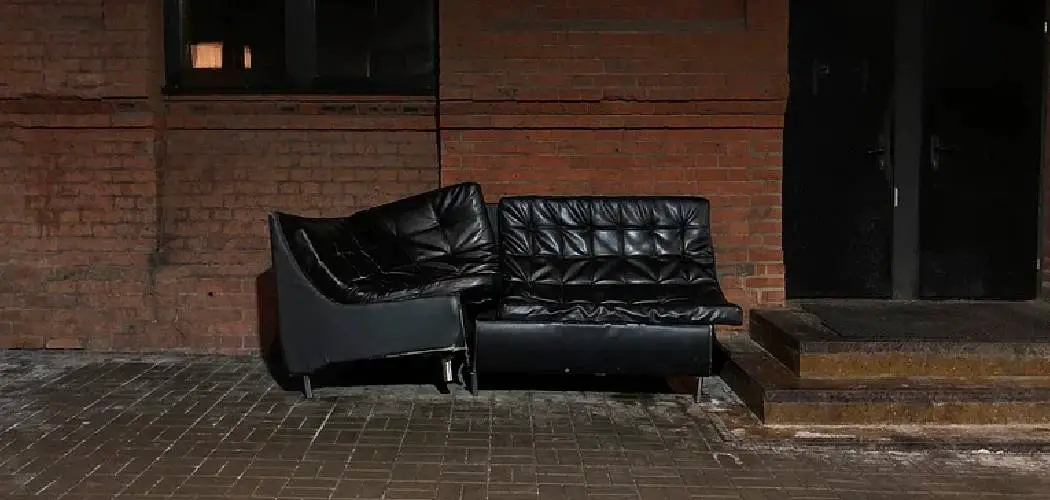Disassembling a sofa can seem like a daunting task, but with the right tools and a bit of patience, it’s a manageable project for anyone. Whether you’re preparing for a move, trying to make room for new furniture, or simply deciding to dispose of your old couch,
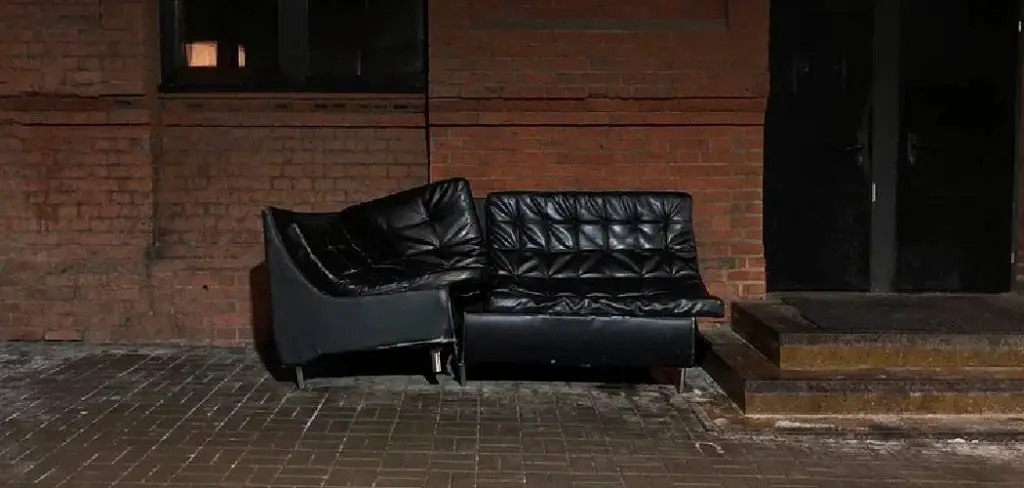
breaking it down correctly ensures safety and efficiency. This guide will walk you through the step-by-step process of how to break down a sofa, helping you understand the necessary tools, tips for disassembly, and how to handle each component responsibly.
Why Breaking Down a Sofa Might Be Necessary
There are several reasons why you might need to break down a sofa. Firstly, moving a sofa in one piece can be incredibly challenging, especially if you need to navigate through tight spaces like stairs, narrow doors, or hallways. Breaking down the sofa makes it easier to transport and reduces the risk of damaging walls or the sofa itself.
Additionally, if you’re disposing of the sofa, many waste management services require furniture to be broken down into smaller pieces for easy collection and recycling. Moreover, for those involved in upcycling or repurposing furniture, disassembling a sofa can provide access to materials such as wood, fabric, and cushions, which can be reused or transformed into something new. Whatever the reason, breaking down a sofa can facilitate easier handling and provide opportunities for practical and creative reuse.
Safety Considerations Before Starting the Task
Before you begin disassembling your sofa, it’s important to prioritize safety to prevent accidents and injuries. Start by ensuring you have a clear, well-lit workspace free of obstacles that could cause trips or falls. Wear appropriate protective gear, such as gloves and safety goggles, to protect your hands and eyes from sharp edges, splinters, or flying debris. It’s also advisable to use tools like screwdrivers,
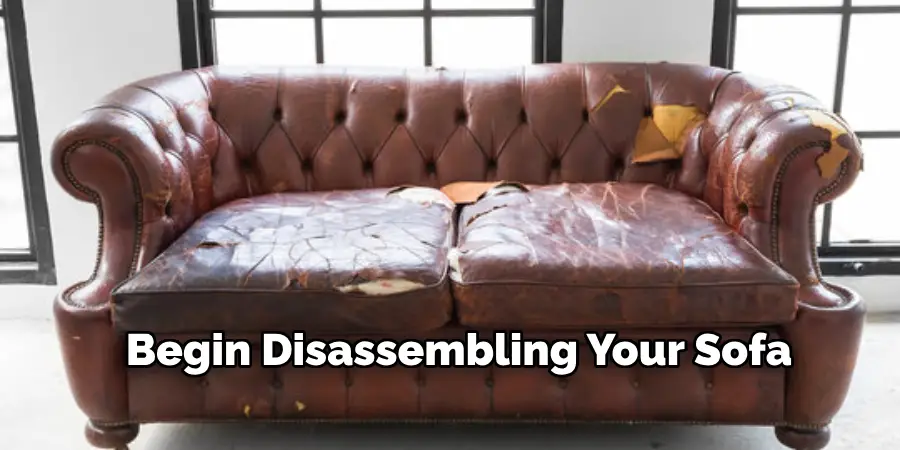
hammers, and pliers with caution, ensuring they are in good condition and used correctly. Keep a first aid kit nearby for any minor injuries that may occur. Lastly, if the sofa is particularly heavy or cumbersome, consider enlisting the help of a friend or family member to avoid straining yourself. Following these safety guidelines can help make the disassembly process smoother and more secure.
Tools and Supplies Needed
To efficiently break down a sofa, having the right tools and supplies on hand is essential. You’ll need a basic toolkit that includes a screwdriver set, with both flathead and Phillips heads, to remove screws securing various components. A pair of adjustable pliers can be helpful for gripping and twisting off stubborn bolts. A utility knife or box cutter will assist in cutting through fabric or upholstery, while a rubber mallet or small hammer can be used to gently knock apart pieces without causing damage.
For larger sofas with wooden frames, a pry bar can be useful in separating precisely glued or nailed joints. Additionally, consider using a staple remover for taking off any fabric attached with staples. It’s also beneficial to have several moving blankets or tarp to protect floors and collect debris, making the cleanup process easier. Finally, having a set of ziplock bags or small containers can help you keep track of small parts like screws and bolts, ensuring no necessary pieces are lost during disassembly.
10 Methods How to Break down a Sofa
1. Assess the Sofa Structure
Before beginning, take time to assess the sofa’s structure to understand how it’s assembled. Examine its frame, cushions, and upholstery to locate screws, bolts, and attachment points. Check for removable parts such as arms, legs, and cushions. If possible, refer to a manufacturer’s guide or online manual to familiarize yourself with its assembly process. Having this knowledge allows you to disassemble the sofa systematically and prevents unnecessary damage to its components.

2. Remove the Cushions and Loose Items
Start by taking off all loose cushions, pillows, and throw blankets. This step clears the working area and reduces weight, making the sofa easier to handle. Place the items in a designated spot to avoid misplacing or damaging them. If the sofa has built-in cushions, check if they are attached with zippers or Velcro and remove them accordingly. Clearing these elements ensures better access to the sofa’s structural components.
3. Detach the Sofa Legs
Most sofas have detachable legs, which are typically screwed or bolted into the frame. Turn the sofa onto its side or upside down to access the legs. Use a wrench, screwdriver, or pliers to unscrew the legs carefully. If the legs are glued, use a rubber mallet to tap them gently and loosen the adhesive. Removing the legs not only reduces the size of the sofa but also makes it easier to maneuver through narrow spaces like doorways and hallways.
4. Disassemble the Arms
The arms of a sofa are often attached to the frame with screws, bolts, or brackets. Locate these fasteners by feeling through the upholstery or checking underneath the sofa. Use the appropriate tool to unscrew or unbolt the arms from the frame. If the arms are glued, you may need a utility knife to carefully cut through the upholstery and adhesive. Removing the arms makes the sofa more compact and manageable for transport or disposal.
5. Cut the Upholstery
If you’re dismantling the sofa for disposal, cutting the upholstery can make the process faster. Use a sharp utility knife or fabric scissors to slice through the fabric covering. Start at a seam or corner and work your way around the sofa, peeling back the fabric to expose the frame. For reuse purposes, remove the fabric carefully by prying out staples or tacks using a staple remover or flathead screwdriver. This method provides access to the internal structure.
6. Take Apart the Frame
Once the upholstery is removed, focus on disassembling the wooden or metal frame. Look for screws, nails, or joints holding the frame together. Use a screwdriver, drill, or hammer to carefully separate the frame’s components. Start with larger sections, such as the backrest or seat frame, and work toward smaller pieces. If the frame is glued, use a rubber mallet or crowbar to gently pry the joints apart. Breaking down the frame simplifies transportation and disposal.
7. Disengage Reclining Mechanisms
For reclining sofas, dismantling the mechanisms requires extra attention. Flip the sofa upside down to access the reclining components. Locate the bolts or screws securing the mechanisms to the frame and use the appropriate tools to remove them. Be cautious of sharp edges or tightly wound springs. Disassemble the mechanism in stages, keeping track of smaller parts like bolts and brackets. Removing the reclining mechanisms lightens the sofa and makes it easier to handle.
8. Separate the Sections
Sectional sofas or modular designs are made to come apart easily. Identify the connecting hardware, such as clips or brackets, that join the sections. Use your hands or tools to disconnect the pieces carefully. Once separated, you can break down each section further by removing legs, arms, or backrests. This modular approach simplifies transportation and storage, especially for oversized sofas.
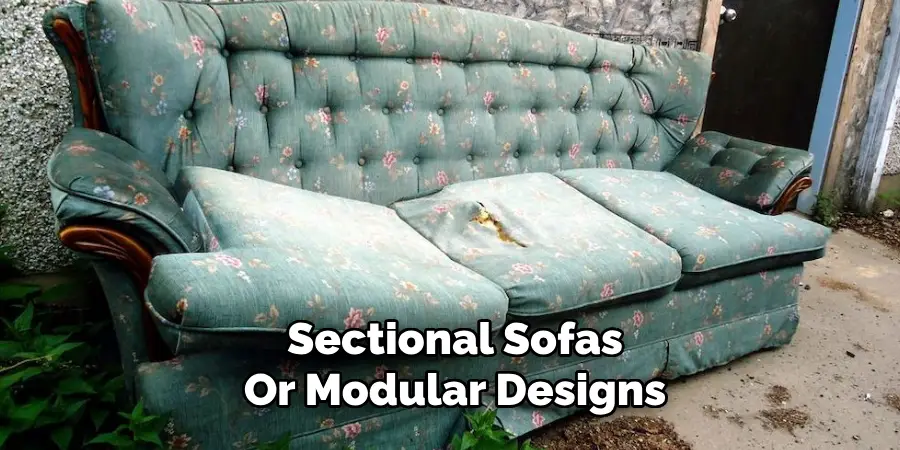
9. Use a Saw for Tough Frames
If the sofa frame is particularly sturdy or the joints are glued tightly, using a saw may be necessary. A handsaw or electric saw can quickly cut through wooden or metal frames. Mark the cutting points clearly to ensure clean and precise cuts. Wear protective gear, such as safety goggles and gloves, to prevent injuries. This method is ideal for breaking down the sofa into smaller pieces that can fit into trash bags or be recycled.
10. Dispose or Repurpose the Components
After disassembling the sofa, decide how to dispose of or repurpose its parts. Check with your local waste management service for guidelines on recycling metal, wood, and fabric. Many sofa frames can be repurposed for DIY projects like shelves or benches. Upholstery and cushions can be reused for pet beds, padding, or crafts. Proper disposal or creative repurposing ensures that you minimize waste and make the most of the dismantled materials.
Common Mistakes to Avoid
When breaking down a sofa, several common mistakes can hinder the process or cause damage. First, rushing through the dismantling without assessing the sofa’s structure can lead to broken components or unsalvageable parts. Taking time to understand the assembly will guide a more systematic approach. Second, failing to use the correct tools can result in stripped screws, damaged upholstery, or injury.
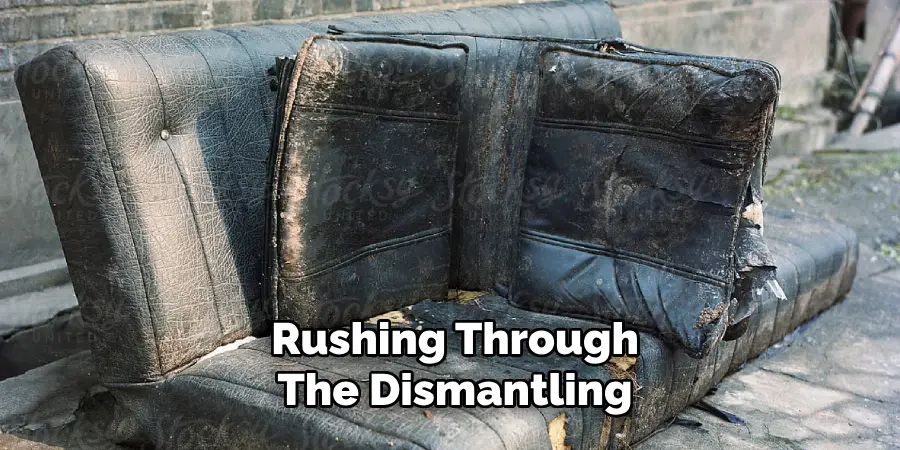
Always have the appropriate tools on hand, such as screwdrivers, wrenches, and safety gear like gloves and goggles. Third, neglecting to keep track of small parts can be problematic when repurposing or reassembling; use ziplock bags to organize screws and bolts. Finally, improper cutting techniques, like slicing through upholstery without careful planning, can cause fabric damage or personal injury. Plan cuts ahead of time, and always work slowly and deliberately to avoid these pitfalls.
Conclusion
Disassembling a sofa might initially seem like a daunting task, but with the right approach and tools, it becomes manageable and efficient. By following a systematic dismantling process, from removing cushions and legs to tackling the frame and upholstery, you can ensure that each step is executed safely and effectively. This careful breakdown not only makes transportation and disposal easier but also opens up opportunities for creative repurposing of materials. Thanks for reading, and we hope this has given you some inspiration on how to break down a sofa!
you can also check it out Protect Walls From Chair Damage

